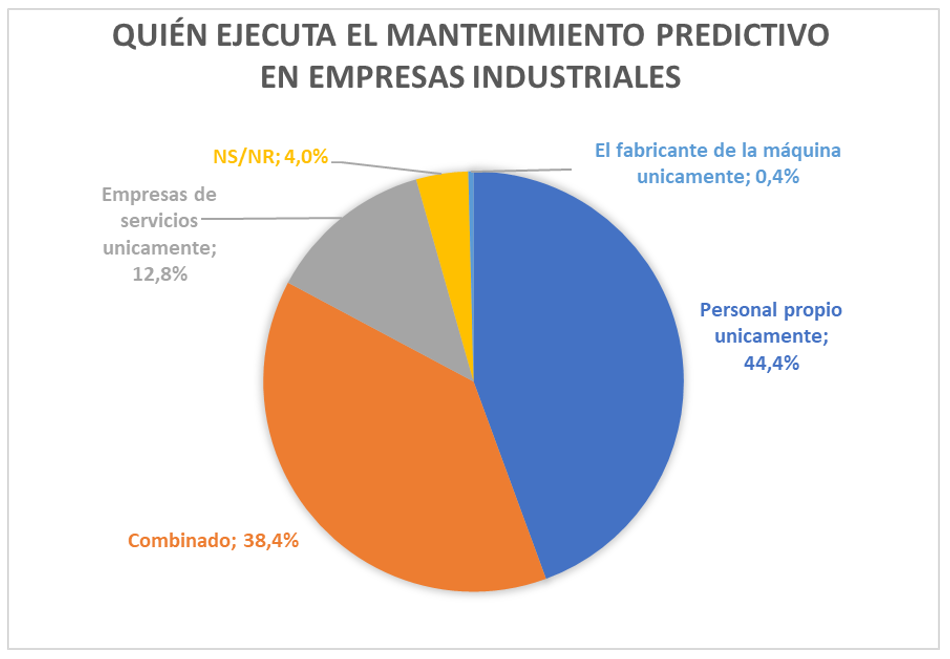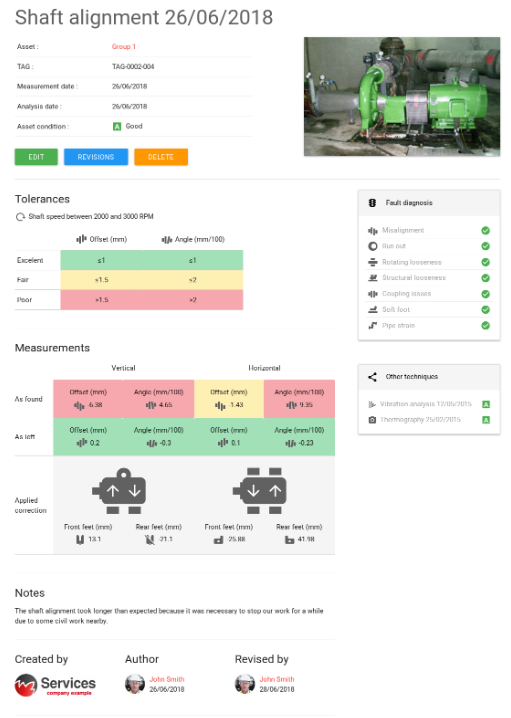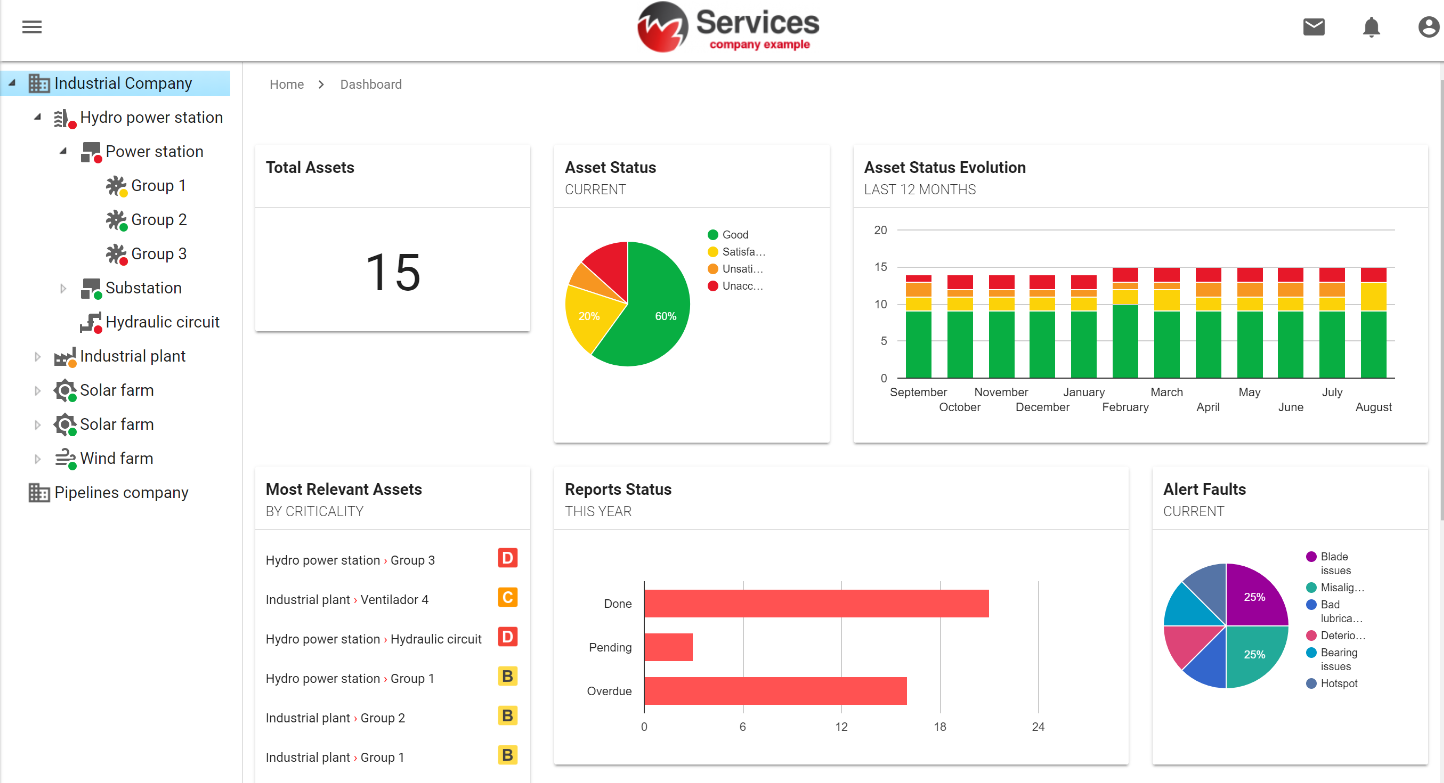Condition-Based Maintenance, With Own Staff or Service Companies?

In the implementation of condition-based maintenance plans, one of the first decisions to be made is whether to buy software and hardware to execute machine inspections or contract services to specialized companies.
According to the first edition of the study of the predictive maintenance sector in Latin America made by the "Congreso de Mantenimiento y Confiabilidad Latinoamérica" (Maintenance and Reliability Congress Latin America) and Power-MI in 2018, 44% of the industries do reliability based maintenance with their staff. Only 38% use their staff, and they contract services, and 13% do so only with service companies.
Since it is widespread to incorporate service companies in the execution of predictive maintenance, we will analyze the criteria to be taken into account when deciding whether to outsource or not.
First of all, before implementing condition-based maintenance, it is necessary to make a preliminary analysis that can be as thorough as an asset management consultancy or a failure mode analysis. Whatever the path may have been, we will start by knowing what technologies to use, the type of hardware needed, and the frequency of machine inspections.
Points to take into account to perform predictive maintenance with our staff
1. Staff availability
It seems logical, but many times, new tasks are assigned to technicians or operators, and an analysis is not done if the workload is viable. Even, many times, the functions assigned to each maintenance technician are not precise. Therefore, it is essential to calculate the workload involved in doing the inspections of machines with their personnel.
2. Staff training
The most common error when implementing condition-based maintenance is to think that, once you have purchased the hardware and software, a training course for the personnel is sufficient for the plant technicians to execute machine inspections. Many times the training is not received by the staff who carry out the reviews, but by maintenance managers or intermediate managers who subsequently delegate.
The training required for a plant staff that has no knowledge or experience in the technology that will be used is not 1, 2, or 5 days. It must be continuous training and, above all, in the beginning, you must have an expert who can be consulted about cases of difficult diagnosis or ask for a second opinion.
3. Team organization
It is essential that before implementing condition-based maintenance, an organizational chart and function definition of the predictive team. Likewise, it is necessary to define if it is an organization separate to the maintenance department that only dedicates itself to machine inspections or if it is transversal to different departments, sections, or production areas.

4. Suppliers
Whether portable or online systems, it is necessary to have the correct technical support from the manufacturer or the manufacturer's representative. Usually, this is on site, and local and trusted suppliers are sought.
The hardware requires calibration, inspections, and maintenance in most cases. It is necessary to take into account this technical support both in equipment availability and in cost. Another element to consider is the equipment warranty.
The software, if it is not in the cloud, requires updates. It is crucial to evaluate this both in cost and in the release dates of new versions. It is quite common that when updating the operating system (usually Windows) of the server, the software version of the equipment is not yet available. Likewise, it is advisable that the manufacturer guarantees the development of software for the useful life of the equipment.
5. Organizational culture
It should be taken into account that the incorporation of asset inspections to monitor their condition possibly creates a new synergy in the organization. This can be seen as supervision to the work of a group of colleagues, and this can bring frictions and changes in the organization to the detriment of it.
Points to take into account to do predictive maintenance with service companies
1. Goals and scope
The maintenance department must previously define the objectives and scope of condition-based maintenance. A common mistake is to expect that service companies will design a condition-based maintenance program to offer a proposal. This leads to predictive maintenance plans designed to win a tender and a disparity of bids from different service companies challenging to compare one another.
Condition-based maintenance plans should be designed based on a previous analysis of RCM (Reliability Centered Maintenance) or RCA (Root-Cause Analysis). Once the objectives and scope of the condition-based maintenance are defined, service companies can be called to make their proposals.
2. Asset information
To adequately inspect assets, it is necessary to know both the technology used to interpret the data and the asset itself. An analyst without adequate information on the asset will not be able to determine its condition. Therefore, it is essential that the service companies have the technical data of the asset, such as the history of events (maintenance tasks) and other inspections in the asset.

3. Service deliverables
Commonly the deliverable in a contract for machine monitoring services are the reports. The reports indicate the condition of the asset and, if applicable, the recommendations to improve the said condition, among other things.
It is essential to agree with the service company how the reports will be delivered. Until recently, the traditional obligation is to send reports using PDF files or MS Excel sheets. From the reports, the maintenance departments must schedule the work orders for maintenance. Currently, reports can be managed using our Power-MI digital platform to automate the generation of work orders.
4. Information management
As the survey mentioned above indicates, it is common to have different sources of information on the condition of the assets: own personnel and various suppliers. It is essential that all the asset condition reports must have the same format and that you can have the consolidated information in one place regardless of the origin of the diagnosis, the analyst and the brand of used equipment.
Other points to take into account
Contracting service companies decreases the initial investment. The two scenarios must be done to compare both options and have an objective way of comparing these alternatives. However, there are hidden items before initiating a maintenance plan.
Many times to save costs, companies with less experience or with personnel without training are hired, and this can lead to the failure to detect dangerous failures that will bring serious economic consequences.
The idea is to align service providers and maintenance personnel to achieve objectives and create a culture of reliability over time.
Whether it's done by our personnel, by service companies or by both, Power-MI allows managing predictive maintenance by having all asset inspections in one place regardless of who makes the diagnosis, the technology used or the brand of the equipment.
What is Power-MI?
Power-MI is a cloud based solution that allows you to design & manage your condition-based maintenance plan integrating all techniques into one platform. Easy reporting, automatic work orders and CMMS integration.
Read more

